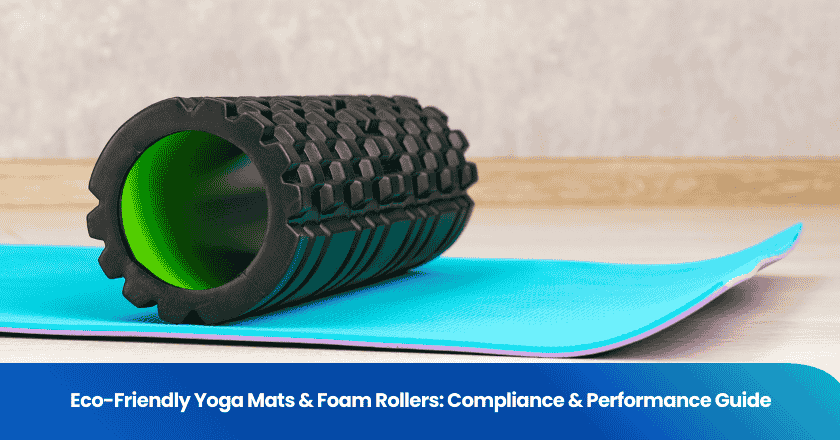
Production quality definition refers to the standard that determines how well a product meets expectations in manufacturing. You need to understand production quality because it directly affects the value you deliver to customers. High quality ensures that your products perform as promised and build trust. When you maintain strict production quality, you protect your business reputation and drive long-term success. Studies show that high defect rates increase costs and reduce customer satisfaction, so focusing on quality can help you achieve better ratings and loyalty. Think about your own experience with products—quality always shapes your perception.
Quality is not just a technical requirement; it is the foundation of customer satisfaction and market leadership.
Key Takeaways
- Understanding production quality is essential for delivering value to customers and building trust.
- Focus on key metrics like defect rates and maintenance to improve product quality and customer satisfaction.
- Adhering to industry standards ensures consistent quality and protects your business reputation.
- Implementing quality control and assurance processes helps prevent defects and enhances product reliability.
- Encourage a culture of continuous improvement to drive quality enhancements and operational efficiency.
Production Quality Definition
Production quality definition sets the foundation for how you evaluate and improve the products you manufacture. When you understand production quality definition, you gain the ability to measure, control, and enhance every aspect of your production process. This definition guides you in setting clear expectations for product performance, reliability, and customer satisfaction. You rely on production quality definition to establish benchmarks that drive your business forward.
Key Elements
You need to focus on several key elements when assessing production quality definition. These elements help you identify strengths and weaknesses in your manufacturing process. The most common measurable elements include process metrics, product metrics, maintenance metrics, and supplier quality metrics. Each metric provides valuable insight into different aspects of production quality.
You use these metrics to monitor and improve production quality definition. For example, tracking defect rates helps you reduce waste and improve customer satisfaction. Monitoring downtime ensures your equipment runs smoothly, which supports consistent quality. Supplier quality metrics allow you to maintain high standards for incoming materials, reducing the risk of defects in your final products.
Tip: Regularly review these metrics to spot trends and address issues before they impact your production quality.
Industry Standards
Industry standards play a critical role in shaping your production quality definition. These standards provide guidelines that help you maintain consistent quality across all products. By following recognized quality standards, you ensure your processes meet international benchmarks and customer expectations.
1. ISO 9001:2015 Quality Management Systems
2. Six Sigma methodology
3. Good Manufacturing Practice (GMP)
4. Industry-specific quality standards
You find that different sectors require unique approaches to production quality definition. Automotive manufacturers follow ISO IATF 16949, which standardizes quality management practices worldwide. Electronics companies rely on strict process controls to prevent defects. Food manufacturers must comply with regulations that prioritize consumer safety, making quality assurance essential for protecting public health.
- The automotive sector faces severe consequences from quality failures. For example, the Takata airbag recall led to significant financial losses and damaged reputations.
- In food manufacturing, lapses in quality can result in contaminated products, posing serious risks to consumers and eroding trust.
You use production quality definition and industry standards to build robust quality control systems. These systems help you prevent defects, ensure safety, and maintain your reputation in the marketplace. When you align your processes with industry standards, you demonstrate your commitment to quality and earn the trust of your customers.
Why Production Quality Matters
Product Performance
You rely on production quality to ensure your products deliver consistent performance. When you maintain high standards, you reduce the risk of defects and improve reliability. Manufacturers who focus on quality see measurable improvements across several key metrics.
You notice that lower defect rates lead to fewer malfunctions and safety risks. High defect rates often result in increased warranty claims and costly recalls. Businesses that prioritize quality avoid these pitfalls and deliver products that meet customer expectations. You protect your bottom line by reducing development costs and launch expenses. Quality-related delays decrease, allowing you to bring products to market faster.
- High defect rates can lead to increased malfunctions and safety risks.
- Defective products can harm consumer trust and brand reputation.
- Businesses faced significant fines and profit losses due to defective products in 2023.
Tip: Consistent product performance starts with a commitment to quality at every stage of manufacturing.
Customer Satisfaction
You build customer satisfaction by delivering products that meet or exceed expectations. Quality plays a direct role in shaping how customers perceive your brand. When you focus on production quality, you minimize complaints and maximize positive experiences. Correlation analysis shows that operational factors, such as production speed and process control, influence both product quality and customer satisfaction scores.
- Customer Satisfaction Correlation Analysis identifies operational factors that influence customer satisfaction scores.
- It helps teams optimize interactions that significantly impact satisfaction outcomes.
- Implementing process improvements based on correlation data can lead to enhanced customer satisfaction.
You see that customer complaints often arise from defects caused by failures in the manufacturing process. Flawed sourcing of raw materials and poorly monitored assembly lines contribute to these issues. Inadequate quality checks can result in product recalls, damaging customer trust and your reputation.
- Customer complaints often arise from defects in products due to manufacturing process failures.
- Issues such as flawed sourcing of raw materials and poorly monitored assembly lines contribute to these defects.
- Inadequate quality checks can lead to significant consequences, including product recalls, which damage customer trust and brand reputation.
Note: You can improve customer satisfaction by analyzing operational data and refining your quality control processes.
Business Reputation
You strengthen your business reputation by consistently delivering high-quality products. Market research shows that nearly 80% of consumers consider product quality essential for building trust in a company. High production quality leads to positive word-of-mouth recommendations, which customers trust more than traditional advertising. Companies with strong quality standards experience fewer complaints and returns, resulting in increased repeat business.
- High production quality builds customer trust, which is essential for business success.
- Nearly 80% of consumers agree that product quality is crucial for building trust in a company.
- High-quality products lead to positive word-of-mouth recommendations, which are more trusted than other advertising forms.
- Companies with high-quality products experience fewer customer complaints and returns, resulting in increased repeat business.
You measure the effect of production quality on brand reputation using several methods:
1. Brand Awareness: Track how well customers recognize or recall your brand through surveys or social media analytics.
2. Customer Loyalty and Retention: Measure repeat purchases and satisfaction scores to determine customer return likelihood.
3. Brand Equity: Assess the overall value of your brand based on consumer perception and reputation.
4. Net Promoter Score (NPS): Measure customer satisfaction and their likelihood to recommend your brand.
5. Market Share: An increasing market share can indicate strong brand performance.
6. Sales Growth: Monitor sales volume growth to assess the impact of your branding strategies.
You also monitor online reviews, customer satisfaction, social media reach, sentiment analysis, and share of voice to gauge your reputation in the marketplace.
Callout: Your reputation depends on your commitment to quality. Customers remember companies that deliver reliable products and exceptional service.
Quality Control and Assurance
Quality control and quality assurance form the backbone of production quality in manufacturing. You need to understand how these two approaches differ and how each contributes to reducing quality defects and maintaining high standards.
Quality Control Methods
Quality control focuses on detecting defects in finished products. You use several methods to ensure product consistency and safety.
The table below highlights the most effective quality control methods in manufacturing:
| Quality Control Method | Description |
|---|---|
| Quality Inspections | Inspection and assessment of products at any stage, using visual, manual, or automated methods. |
| Failure Testing | Evaluation of product durability under extreme conditions to identify flaws. |
| Six Sigma | Structured approach to reduce defects through a defined process. |
| Root Cause Analysis (RCA) | Identification of primary causes of quality failures to prevent long-term issues. |
| Statistical Process Control (SPC) | Use of statistical methods to monitor processes and identify potential issues before defects occur. |
| Lean Manufacturing | Minimization of waste and improvement of processes for consistent quality. |
| Total Quality Management (TQM) | Holistic approach involving all employees in maintaining quality and reducing defects. |
Quality control methods also contribute to safety. For example, inspection helps you identify defects early, reducing the risk of accidents. Statistical process control allows you to catch small defects before they become costly errors, especially in critical applications. Employee training ensures your team understands quality standards and can spot defects, improving safety across your operation.
Quality Assurance Processes
Quality assurance takes a proactive approach. You focus on preventing defects by improving processes and establishing standards.
The table below outlines the key differences between quality assurance and quality control:
| Aspect | Quality Assurance (QA) | Quality Control (QC) |
|---|---|---|
| Focus | Prevention of defects through process improvement | Detection of defects in the final product |
| Approach | Process-oriented, improving the entire production process | Product-oriented, inspecting and testing finished products |
| Timing | Proactive, preventing problems before they occur | Reactive, addressing problems after they are detected |
| Goal | Continuous improvement in processes | Identifying and eliminating defects in current products |
| Methods | Process mapping, training, SOPs | Inspections, testing, sampling |
| Documentation | Extensive documentation to standardize processes | Documenting defects and corrective actions |
You follow a series of steps in quality assurance to maintain consistent standards:
1. Establish quality objectives and standards.
2. Plan for quality.
3. Design quality assurance processes.
4. Test for quality assurance.
5. Monitor and control quality assurance activities.
6. Gather customer feedback and validate results.
7. Conduct quality assurance audits.
Quality assurance processes help you set standards and procedures so products meet specific requirements. You improve processes and comply with industry standards, which boosts customer satisfaction. By minimizing production errors, you maintain consistent standards and achieve cost savings through reduced scrap and returns. Frameworks like Six Sigma and tools such as Failure Mode and Effect Analysis help you identify risks early and reduce defects.
Tip: You strengthen production quality by combining quality control methods with robust quality assurance processes. This approach helps you prevent defects, ensure safety, and deliver consistent results in manufacturing.
Quality Improvement
Best Practices
You drive quality improvement by adopting proven methods that enhance your processes and outcomes. In manufacturing, you can rely on several best practices to achieve consistent results and minimize errors. These practices not only improve product quality but also boost efficiency and reduce costs.
You benefit from these practices by reducing variability, decreasing training time, and enabling performance comparisons across shifts or facilities. When you implement quality control and quality assurance best practices, you ensure consistency and quality in production standards. This approach reduces returns and warranty claims, strengthens customer loyalty, and gives you a competitive edge.
Continuous Improvement
Continuous improvement forms the core of any successful quality improvement strategy. You create a culture where everyone seeks ways to make processes better.
You measure the success of your continuous improvement initiatives using clear metrics. For example, you track process cycle time reduction, first-pass yield, and defect reduction rates. You also monitor process adherence, audit compliance, and customer satisfaction scores. When you focus on quality improvement, you build a foundation for lasting excellence in production quality.
Tip: Encourage your team to suggest small changes regularly. Even minor improvements can lead to significant gains in quality and efficiency over time.
You gain a competitive edge when you prioritize production quality in manufacturing. Lean manufacturing and Six Sigma help you reduce defects and improve reliability, leading to fewer warranty claims and lower costs.
- Effective quality management ensures products meet excellence standards and enhances customer loyalty.
- Standardized workflows minimize errors, helping you deliver consistent results.
You build a culture of continuous improvement by encouraging your team to suggest changes and recognize small wins. Start implementing best practices today to drive sustainable growth and maintain high standards.
FAQ
What is the difference between quality control and quality assurance?
Quality control detects defects in finished products. Quality assurance prevents defects by improving processes. You use both to maintain high standards and deliver reliable products.
How do you measure production quality in manufacturing?
You track metrics such as defect rates, yield, downtime, and customer complaints. These indicators help you identify areas for improvement and maintain consistent product quality.
Tip: Regularly review your metrics to spot trends and address issues early.
Why should you follow industry standards for production quality?
Industry standards help you meet customer expectations and regulatory requirements. You build trust and reduce risks by aligning your processes with recognized guidelines.
What are some common quality improvement methods?
You can use Six Sigma, Lean, and Kaizen to reduce defects and improve efficiency. These methods encourage continuous improvement and help you achieve better results.
How does production quality impact customer satisfaction?
High production quality leads to fewer complaints and returns. You build customer loyalty by delivering products that meet expectations and perform reliably.
Grow your business with TradeAider Service
Click the button below to directly enter the TradeAider Service System. The simple steps from booking and payment to receiving reports are easy to operate.



